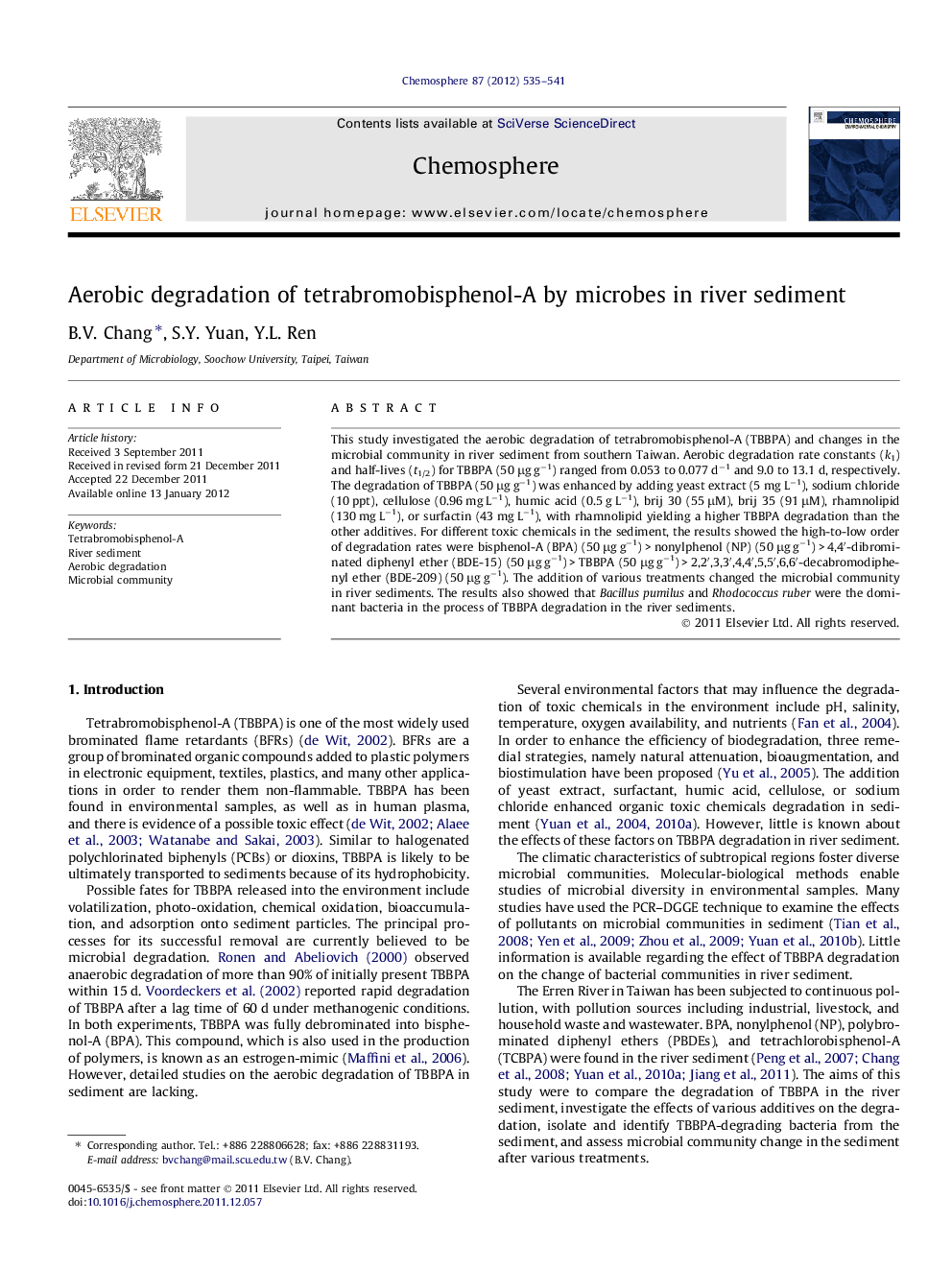| کد مقاله | کد نشریه | سال انتشار | مقاله انگلیسی | نسخه تمام متن |
|---|---|---|---|---|
| 4410224 | 1307534 | 2012 | 7 صفحه PDF | دانلود رایگان |

This study investigated the aerobic degradation of tetrabromobisphenol-A (TBBPA) and changes in the microbial community in river sediment from southern Taiwan. Aerobic degradation rate constants (k1) and half-lives (t1/2) for TBBPA (50 μg g−1) ranged from 0.053 to 0.077 d−1 and 9.0 to 13.1 d, respectively. The degradation of TBBPA (50 μg g−1) was enhanced by adding yeast extract (5 mg L−1), sodium chloride (10 ppt), cellulose (0.96 mg L−1), humic acid (0.5 g L−1), brij 30 (55 μM), brij 35 (91 μM), rhamnolipid (130 mg L−1), or surfactin (43 mg L−1), with rhamnolipid yielding a higher TBBPA degradation than the other additives. For different toxic chemicals in the sediment, the results showed the high-to-low order of degradation rates were bisphenol-A (BPA) (50 μg g−1) > nonylphenol (NP) (50 μg g−1) > 4,4′-dibrominated diphenyl ether (BDE-15) (50 μg g−1) > TBBPA (50 μg g−1) > 2,2′,3,3′,4,4′,5,5′,6,6′-decabromodiphenyl ether (BDE-209) (50 μg g−1). The addition of various treatments changed the microbial community in river sediments. The results also showed that Bacillus pumilus and Rhodococcus ruber were the dominant bacteria in the process of TBBPA degradation in the river sediments.
► We examined TBBPA degradation and microbial community change in river sediment.
► Rhamnolipid yielded a higher degradation rate than the other additives.
► The microbial community changed with various treatments in the sediment.
► Bacillus pumilus and Rhodococcus ruber were dominant bacteria in TBBPA degradation.
Journal: Chemosphere - Volume 87, Issue 5, April 2012, Pages 535–541